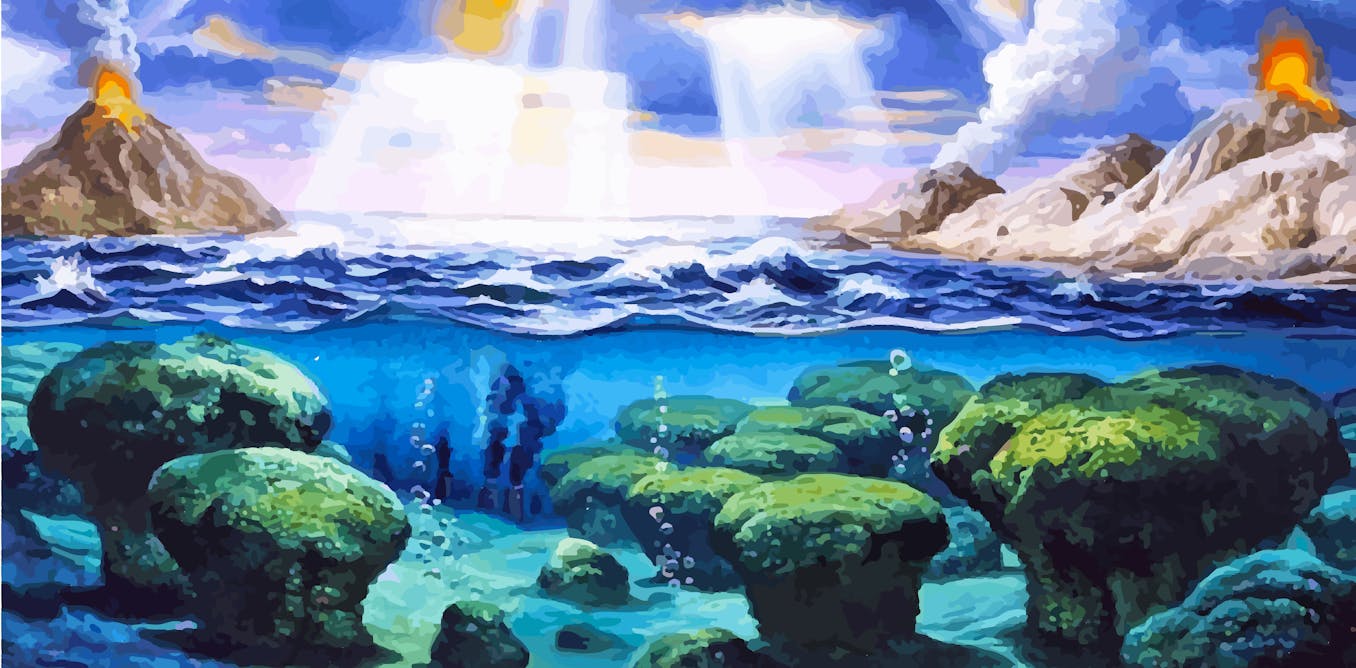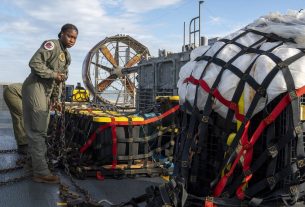There is still so much we don’t understand about the origin of life on Earth.
The definition of life itself is a source of debate among scientists, but most researchers agree on the fundamental ingredients of a living cell. Water, energy, and a few essential elements are the prerequisites for cells to emerge. However, the exact details of how this happens remain a mystery.
Recent research has focused on trying to recreate in the lab the chemical reactions that constitute life as we know it, in conditions plausible for early Earth (around 4 billion years ago). Experiments have grown in complexity, thanks to technological progress and a better understanding of what early Earth conditions were like.
However, far from bringing scientists together and settling the debate, the rise of experimental work has led to many contradictory theories. Some scientists think that life emerged in deep-sea hydrothermal vents, where the conditions provided the necessary energy. Others argue that hot springs on land would have provided a better setting because they are more likely to hold organic molecules from meteorites. These are just two possibilities which are being investigated.
Here are five of the most remarkable discoveries over the last five years.
Reactions in early cells
What energy source drove the chemical reactions at the origin of life? This is the mystery that a research team in Germany has sought to unravel. The team delved into the feasibility of 402 reactions known to create some of the essential components of life, such as nucleotides (a building block of DNA and RNA). They did this using some of the most common elements that could have been found on the early Earth.
These reactions, present in modern cells, are also believed to be the core metabolism of LUCA, the last universal common ancestor, a single-cell, bacterium-like organism.
For each reaction, they calculated the changes in free energy, which determines if a reaction can go forward without other external sources of energy. What is fascinating is that many of these reactions were independent of external influences like adenosine triphosphate, a universal source of energy in living cells.
The synthesis of life’s fundamental building blocks didn’t need an external energy boost: it was self-sustaining.
Volcanic glass
Life relies on molecules to store and convey information. Scientists think that RNA (ribonucleic acid) strands were precursors to DNA in fulfilling this role, since their structure is more simple.
The emergence of RNA on our planet has long confused researchers. However, some progress has been made recently. In 2022, a team of collaborators in the US generated stable RNA strands in the lab. They did it by passing nucleotides through volcanic glass. The strands they made were long enough to store and transfer information.
Volcanic glass was present on the early Earth, thanks to frequent meteorite impacts coupled with a high volcanic activity. The nucleotides used in the study are also believed to have been present at that time in Earth’s history. Volcanic rocks could have facilitated the chemical reactions that assembled nucleotides into RNA chains.
Hydrothermal vents
Carbon fixation is a process in which CO₂ gains electrons. It is necessary to build the molecules that form the basis of life.
An electron donor is necessary to drive this reaction. On the early Earth, H₂ could have been the electron donor. In 2020, a team of collaborators showed that this reaction could spontaneously occur and be fuelled by environmental conditions similar to deep-sea alkaline hydrothermal vents in the early ocean. They did this using microfluidic technology, devices that manipulate tiny volumes of liquids to perform experiments by simulating alkaline vents.
This pathway is strikingly similar to how many modern bacterial and archaeal cells (single-cell organisms without a nucleas) operate.
The Krebs Cycle
In modern cells, carbon fixation is followed by a cascade of chemical reactions that assemble or break down molecules, in intricate metabolic networks that are driven by enzymes.
But scientists are still debating how metabolic reactions unfolded before the emergence and evolution of those enzymes. In 2019, a team from the University of Strasbourg in France made a breakthrough. They showed that ferrous iron, a type of iron that was abundant in early Earth’s crust and ocean, could drive nine out of 11 steps of the Krebs Cycle. The Krebs Cycle is a biological pathway present in many living cells.
Here, ferrous iron acted as the electron donor for carbon fixation, which drove the cascade of reactions. The reactions produced all five of the universal metabolic precursors – five molecules that are fundamental across various metabolic pathways in all living organisms.
Building blocks of ancient cell membranes
Understanding the formation of life’s building blocks and their intricate reactions is a big step forward in comprehending the emergence of life.
However, whether they unfolded in hot springs on land or in the deep sea, these reactions would not have gone far without a cell membrane. Cell membranes play an active role in the biochemistry of a primitive cell and its connection with the environment.
Modern cell membranes are mostly composed of compounds called phospholipids, which contain a hydrophilic head and two hydrophobic tails. They are structured in bilayers, with the hydrophilic heads pointing outward and the hydrophobic tails pointing inward.
Research has shown that some components of phospholipids, such as the fatty acids that constitute the tails, can self-assemble into those bilayer membranes in a range of environmental conditions. But were these fatty acids present on the early Earth? Recent research from Newcastle University, UK gives an interesting answer. Researchers recreated the spontaneous formation of these molecules by combining H₂-rich fluids, likely present in ancient alkaline hydrothermal vents, with CO₂-rich water resembling the early ocean.
This breakthrough aligns with the hypothesis that stable fatty acid membranes could have originated in alkaline hydrothermal vents, potentially progressing into living cells. The authors speculated that similar chemical reactions might unfold in the subsurface oceans of icy moons, which are thought to have hydrothermal vents similar to terrestrial ones.
Each of these discoveries adds a new piece to the puzzle of the origin of life. Regardless of which ones are proved correct, contrasting theories are fuelling the search for answers. As Charles Darwin wrote:
False facts are highly injurious to the progress of science for they often long endure: but false views, if supported by some evidence, do little harm, for everyone takes a salutary pleasure in proving their falseness; and when this is done, one path towards error is closed and the road to truth is often at the same time opened.



